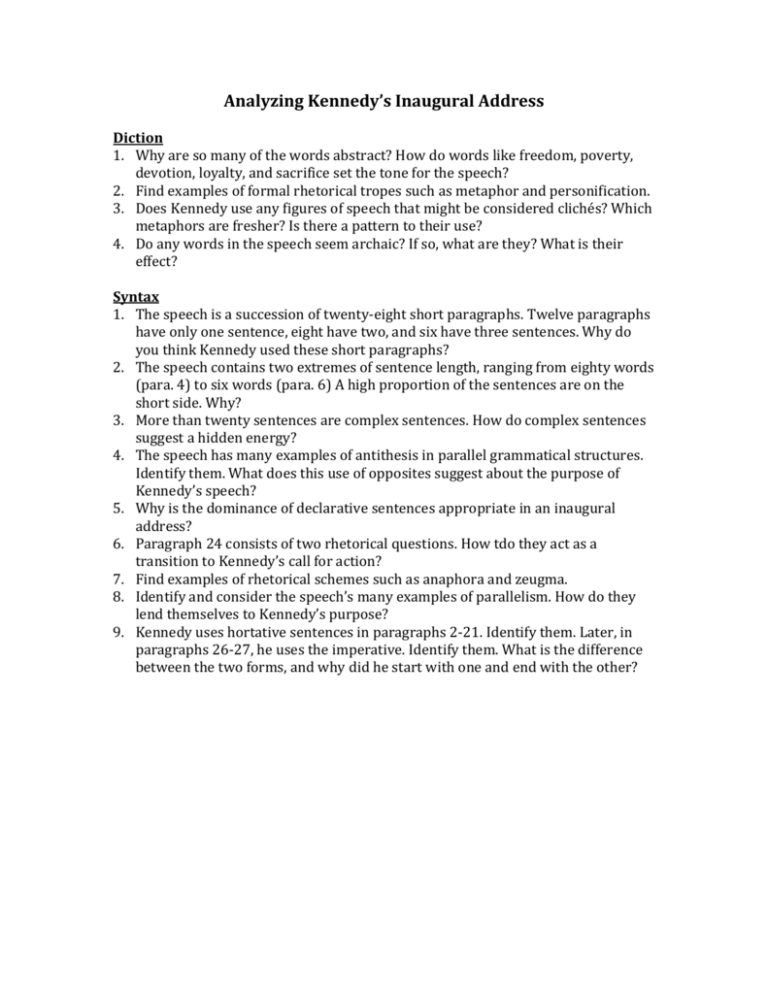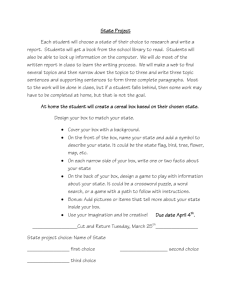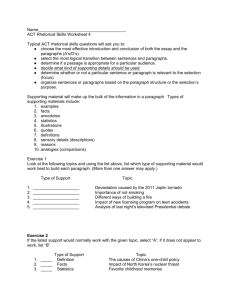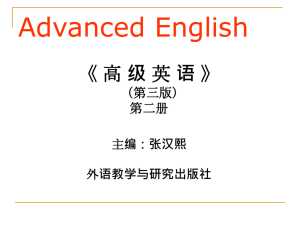Analyzing Kennedy's Inaugural Address
advertisement

Analyzing Kennedy’s Inaugural Address Diction 1. Why are so many of the words abstract? How do words like freedom, poverty, devotion, loyalty, and sacrifice set the tone for the speech? 2. Find examples of formal rhetorical tropes such as metaphor and personification. 3. Does Kennedy use any figures of speech that might be considered clichés? Which metaphors are fresher? Is there a pattern to their use? 4. Do any words in the speech seem archaic? If so, what are they? What is their effect? Syntax 1. The speech is a succession of twenty-eight short paragraphs. Twelve paragraphs have only one sentence, eight have two, and six have three sentences. Why do you think Kennedy used these short paragraphs? 2. The speech contains two extremes of sentence length, ranging from eighty words (para. 4) to six words (para. 6) A high proportion of the sentences are on the short side. Why? 3. More than twenty sentences are complex sentences. How do complex sentences suggest a hidden energy? 4. The speech has many examples of antithesis in parallel grammatical structures. Identify them. What does this use of opposites suggest about the purpose of Kennedy’s speech? 5. Why is the dominance of declarative sentences appropriate in an inaugural address? 6. Paragraph 24 consists of two rhetorical questions. How tdo they act as a transition to Kennedy’s call for action? 7. Find examples of rhetorical schemes such as anaphora and zeugma. 8. Identify and consider the speech’s many examples of parallelism. How do they lend themselves to Kennedy’s purpose? 9. Kennedy uses hortative sentences in paragraphs 2-21. Identify them. Later, in paragraphs 26-27, he uses the imperative. Identify them. What is the difference between the two forms, and why did he start with one and end with the other?






